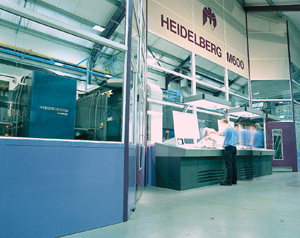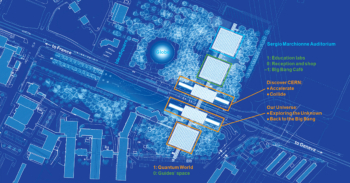The magazine CERN Courier is distributed all over the world. So-Mui Cheung of the Institute of Physics Publishing in Bristol, England, explains how this is achieved.

CERN Courier magazine has come a long way since it was established as CERN’s house journal more than 40 years ago in 1958.
Soon after the magazine’s launch, it began to reflect particle physics developments worldwide, as well as what was happening at CERN. In 1975 a major world meeting of particle physics laboratory directors underlined the importance of the journal in serving the worldwide particle physics community, and the decision was taken to “go international”, with official correspondents in major research centres feeding in news, and with special arrangements for distribution in certain countries. Hence the paradox of a CERN magazine that is distributed all over the world.
This network of international correspondents is still in place and it is the lifeblood of the magazine. Another important aspect of CERN Courier is the distribution network that exists to get the magazine to its readers.
From printer to reader
CERN Courier is published 10 times a year in parallel English and French editions (the official languages for all important CERN documents). For each issue around 18,000 copies of the English edition and 5500 copies of the French edition are printed and distributed worldwide.

With a total of 23,500 copies, CERN Courier is read far beyond the particle physics community, which accounts for about half of the total. Reader surveys have shown that the additional readership is mainly scientist administrators, scientists in other fields and students, all of whom want to keep up with developments in basic physics without wanting to get too involved with details.
In the 1990s it became clear that the magazine could not continue to evolve while being published using CERN’s limited in-house resources. In 1998, responsibility for the production and distribution of the magazine passed to the Institute of Physics Publishing (IOP), in Bristol, England, which now publishes the magazine on CERN’s behalf. The editor at CERN retains responsibility for all of the editorial content, but the 1998 transition was a turning point in the magazine’s development.
A complex route
The task of distributing each edition of CERN Courier is both complex and challenging. The total print run of each issue weighs around 3 tonnes and has to be sent all over the world. Since IOP entered into a publishing partnership with CERN, it has been improving the distribution performance to shorten the time it takes for the journal to reach its readers. The magazine is available free of charge, so this distribution also has to be as economical as possible.
Readers can receive CERN Courier in two ways:
- via internal distribution at major research centres – to receive the magazine regularly, please check with your local distribution centre;
- via subscription (10,900 named subscribers, normally based at more isolated locations, receive individually mailed and addressed copies) – to become a regular reader via this route, see http://cerncourier. com/subscribe.html.
Coming off the press, each edition of CERN Courier splits into three separate routes:
- within the UK, where copies leaving he printer for individual readers in Europe and the rest of the world are polythene-wrapped and labelled for onward mailing;
- onwards to the US, where it is mailed and despatched to addresses in North America. For these readers, copies travel by truck from the printer to a freight handler, who books it onto a flight to New York. From there it goes on another truck to Illinois to be either enveloped and mailed, or packed in boxes and despatched to major research centres;
- bulk deliveries to major distribution centres in Europe and further afield, including Beijing, CERN, Hamburg, Frascati, Moscow, Seoul and 16 other destinations.
Plans for improvement
The Rutherford Appleton Laboratory (RAL) in the UK, DESY in Hamburg and INFN in Frascati play a special role in the distribution of CERN Courier within their respective countries. Because of the logistics involved, RAL receives copies direct from the printer, while the other two centres currently receive their copies via Belgium. An initiative is already under way to establish closer links with these major distribution centres and to enhance the distribution performance further. CERN has a particularly heavy distribution load, sending copies all over the world as well as distributing them within the laboratory.
By the time the magazine arrives on a reader’s desk or is taken from a central pick-up point, its journey will have included rides on trucks, ferries and aeroplanes. It will have been scanned by customs officials and handled by international and national shippers, not to mention being sorted and distributed within major centres.
During 2001 we were able to reduce delivery times by, on average, four days for copies sent to individually mailed addresses. In a similar way, 4-10 days have been cut for those copies travelling to the US. There is still room for improvement, not least because of the rapidly changing world scene for postal and courier services. Soon we will implement a much-needed overhaul of some of the address lists. Readers who receive copies mailed from Europe should soon expect to receive a letter and a reply coupon as well as an issue of the magazine.
There are key people at the major distribution points who ensure that you receive your copy of CERN Courier each month. These are low-profile yet vitally important roles that ensure that mailing lists are up to date and that centres receive enough copies.
We are in contact with most of these key people, but not all. The magazine’s distribution network has in many cases developed by itself. A closer collaboration will help to improve the distribution of the magazine continuously, so if you have a role in this, please contact me.





